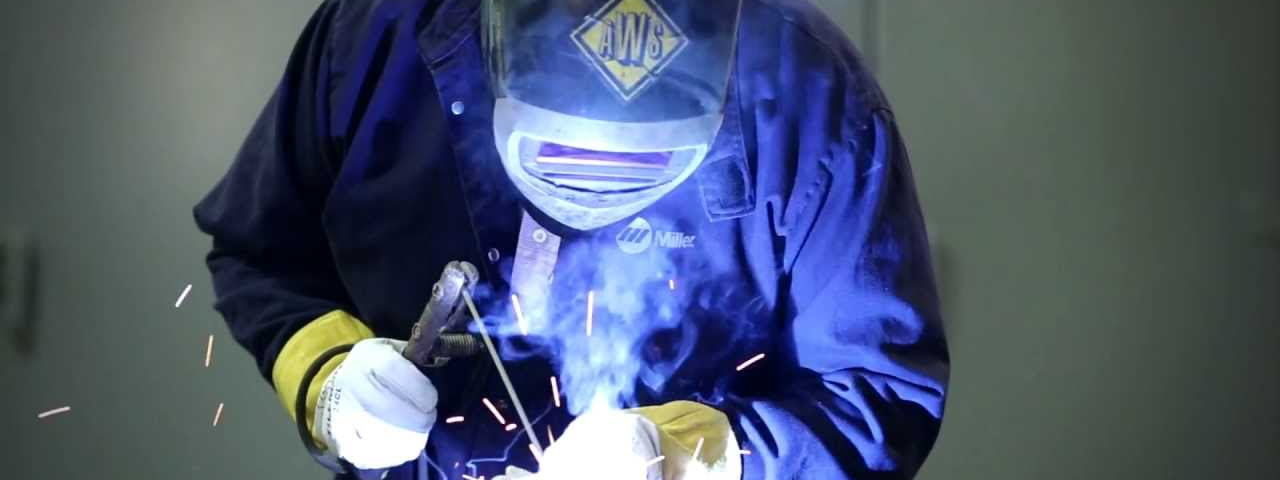Shielded Metal Arc Welding (SMAW), or ‘stick welding’ as it’s sometimes called, is one of the most common welding methods used in modern industrial fabrication processes.
SMAW involves an electrode, usually a metal rod or stick, clamped to a welding torch to create an electric arc.The high temperature of the arc melts both the electrode and the work piece. Drops of metal are transferred from the electrode onto the work piece to form a weld pool. Theelectrode is coated with an inert material that vaporizes at high temperature, creating an inert cloud of gas that protects the molten metal from oxygen in the air. The inert material settles on the molten metal and creates slag, which must be chipped off once the weld cools.
SMAW is one of the most adaptable forms of welding. Electrodes come in a variety of sizes depending on the application. Direct (DC) or alternating currents (AC) can also be used to suit the size of the electrode.
In general, the equipment used for SMAW is simple, reliable and portable, allowing it to be used in a wide range of welding situations. It can also be run off a gas or diesel engine, in the event thatan electricity source is not readily available. SMAW can be used to weld cast iron, stainless steel and other metals of varying thicknesses, but cannot be used ontitanium or zirconium.
The quality of the SMAW process largely depends on the skill of the welder and is not easily automated. However, SMAW is typically taught during the early stages of welding training programs and the vast majority of certified welders can complete the task to a relatively high standard.
